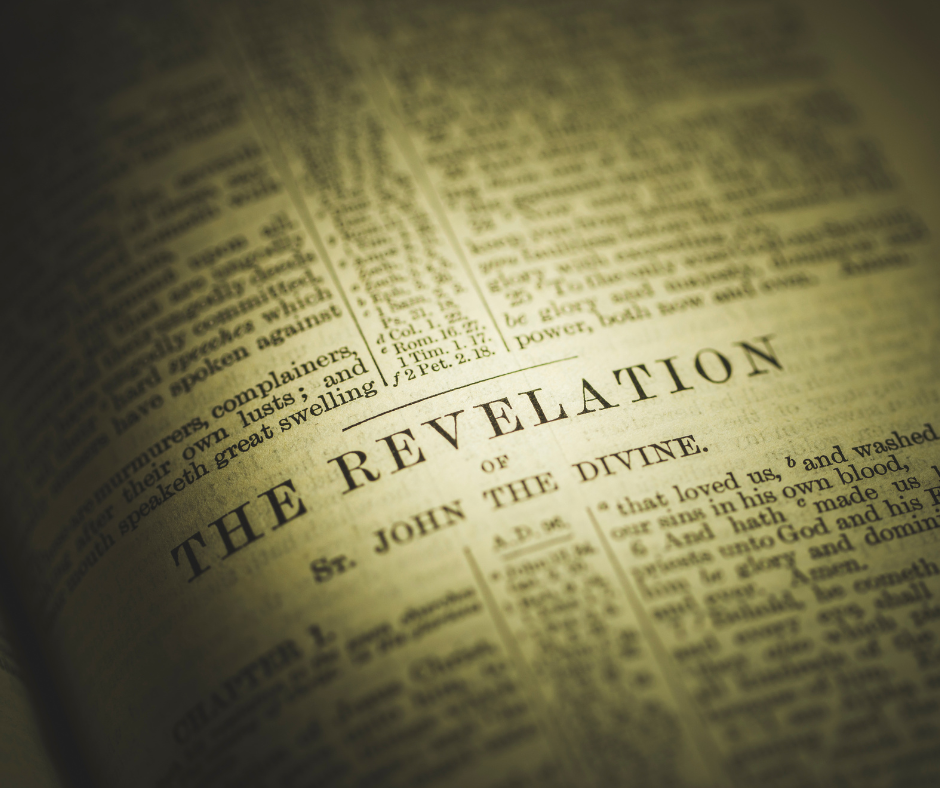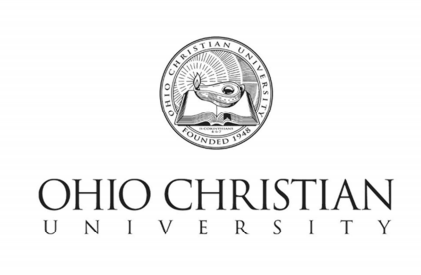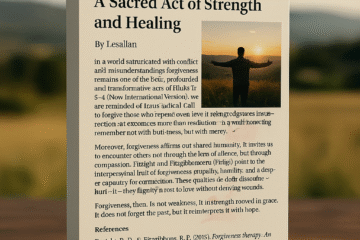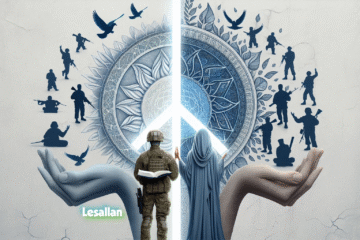
General Materials
The general material found in the Book of Revelation (ESV) is a book written by a prophet named John of Patmos to the seven churches of Asia Minor. The churches of Asia Minor faced persecution and temptation from the Roman Empire and false teachers. The Book of Revelation is a prophetic book with the subgenre being that of apocalyptic literature. Apocalyptic literature is what this book is best known for. This type of literature means it uses visions, symbols, and allegories to reveal God’s plans for the future and encourage His people to remain faithful. The reason that the Book of Revelation does not primarily emphasize persons (biographical), historical events, or chronological (time) events, nor does it emphasize places (geographical), or even ideological events, is because it is a book of prophetic and apocalyptic events that have been seen and written that reveal the plan that God has for the future. The Book of Revelation is complex and challenging based on the Old Testament. Nevertheless, hope is found in the book’s message for those who trust in God and His Son, Jesus Christ.
Major Structural Relationships
The Book of Revelations is divided into seven sections.
Each section parallels one another and depicts different aspects of God’s judgment and Salvation.
The Book of Revelation is written in seven parallel sections covering the same time period from the first to the second coming of Christ. Each section is written from a different perspective.
What are the seven different sections?
The spiritual conditions and the challenges are mentioned in seven letters to the seven churches in Asia Minor (Revelation 2, 3).
What do the seven seals in Revelation chapters four through seven represent?
The seven seals represent and reveal the divine judgments on the world and the witness of the church through history (Revelation 4, 7, ESV).
What do the seven trumpets announce?
The seven trumpets announce the world’s partial destruction and the church’s witness throughout history (Revelation 8, 11, ESV).
What do the seven signs found in Revelation chapters twelve through fourteen depict?
The cosmic battle between God and Satan, the role of Israel, Christ, and the church’s place in it (Revelation 12, 14, ESV).
Who do the seven bowls found in Revelation chapters 15-16 which pour out the final wrath of God on the wicked and prepare for the end of the age, represent or depict?
The seven bowls mentioned in Revelation sixteen are a set of plagues. These have been recorded as apocalyptic events seen in the vision of the Revelation of Jesus Christ through the mind and writing of John of Patmos. His vision was of seven angels who were given seven bowls of God’s wrath. These bowls were all filled with the judgments and the wrath of God. God’s wrath was poured out on the wicked and the followers of the Antichrist after the sounding of the seven trumpets.
What type of plagues did the seven bowls represent or depict in the Book of Revelation chapter sixteen?
Seven plagues are represented or depicted; the first bowl caused painful sores to break out on those with the mark of the beast and worship his image. The second bowl turned the sea into the blood and killed every living thing in it. The third bowl again finds blood as the rivers and springs are turned into blood. This is done as a just retribution for those who shed the blood of God’s people. The sun scorches people with fire and intense heat in the fourth bowl. The fifth bowl shoves the kingdom of the beast into darkness and causes people to chew their tongues in agony. In the sixth bowl, the Euphrates dries up, preparing the way for the kings of the east to gather at that final battle called Armageddon. Great earthquakes and massive hailstorms are unleashed that destroy the cities and nations and Babylon – the great prostitute. The bowls symbolize God’s righteous judgment on a rebellious and sinful world that refuses to repent and glorify Him. These bowls also foreshadow God’s final victory over evil and His ultimate restoration of all things.
Revelation uses a chiastic or symmetrical structure.
The first and last sections correspond to each other, the second and sixth sections correspond to each other, and so forth.
One can observe the chiastic or symmetrical through comparison. The comparison of the words, themes, symbols, and ideas found in the book’s first half with those of the book’s second half. The literary device used in the Book of Revelation is first prophetic, followed by apocalyptic.
How does the Book of Revelation use a chiastic or symmetrical Structure?
The answer to this question is that the book uses this type of literary structure to highlight or emphasize the central point or climax of the message.
How does this structure help us understand the message of the Book of Revelation?
The chiastic structure helps us understand the message more clearly and appreciate its literary beauty. It shows the reader that God controls history and will succeed in the battle over good and evil.
Many different types of literary devices are employed in the Book of Revelation.
The Book of Revelation uses literary devices such as repetition, contrast, parallelism, symbolism, imagery, and numerology to convey its message.
The use of “repetition” the same or similar words, phrases, and ideas are used to either emphasize a point or create a pattern. Using contrasting (contrast) in words, phrases, and ideas is then used to highlight a difference or create tension. Terms and words are used that are similar are used to show relationships to other words, phrases, or ideas, and this is called parallelism. The use of symbolism which is the use of solid objects, actions, or characters, is used to represent abstract concepts, qualities, or realities in the Book of Revelations. The vivid and descriptive language used in the Book of Revelation creates a picture or evokes a sensation in the reader’s mind. Numerology is used to convey to the reader through a series of numbers and patterns to convey hidden or symbolic meaning. There are many such uses of numbers and their symbolic meanings, such as three and a half, four and ten, eight, and twelve. The use of numerology in Revelation helps John of Patmos to express his worldview. John uses numerology to express his hope for God’s ultimate victory over evil. Numerology is used to help the readers to understand the symbolic nature of his (John’) visions and to discern his message for their situation.
What is an example of the literary devices used in Revelation that create a point or emphasize a pattern?
In Revelation 11:2-3, the holy city is trampled for forty-two months (three and a half years) and is used as an example of numerology. Signify the numbers four and ten, which were used to signify totality or completeness. Examples are found in Revelation 4:6-9 where there are four living creatures around God’s throne that represent all creation.
Many different Old Testament passages and themes are used.
Themes found in the Old Testament, i.e., the Books of Daniel, Ezra, Ezekiel, Isaiah, and Zechariah, are used in the Book of Revelation.
The Book of Revelation draws heavily on the Old Testament, especially on the books mentioned. The themes used are God’s sovereignty and the conflict between God and Satan. The judgment of God, the Salvation of God, and the worship of God.
What are some examples of these themes and passages in the Book of Revelations?
Revelation affirms that God is the Creator of all things, that He has a plan for all things, and this will end in His victory over evil and the founding of His eternal Kingdom (Revelation, 4:11; 10:6; 11:15-17; 19:6). The conflict between God and Satan, the cosmic war between God and His faithful people on one side. On the other hand, Satan and his evil allies are found in Revelation 12:1-17; 13:1-18, and the protection God gives to His people when Satan is defeated in the final battle (Revelation, 19:11-21; 20:7-10). The judgment of God and the warnings are found in Revelations 6:1-17; 8:1-9:21; 11:15-19; 15;1-16:21. Salvation is proclaimed for those that repent of sin and place their trust in Christ in Revelation 5:9-10; 7:9-17; 12:11. The worship of God and Revelation showing God is worthy of worship and praise from all of His creation is found in Revelation 4:8-11; 5:8-14; 7:9-12; 11:16-18.
Revelation reveals Jesus Himself as the Lamb of God, the King of Kings, and the Lord of Lords.
There are various ways in Revelation that Jesus reveals himself as the Lamb of God, the King of Kings, and the Lord of Lords.
As the Lamb of God, He was slain. He redeemed people from every tribe, tongue, and nation by His blood (Revelation 5:6-10). He is the one who opens the seven seals and reveals God’s plan for history (Revelation 6:1-8:1). He stood on Mount Zion with the 144,000 who had His name and His Father’s name written on their foreheads (Revelation 14:1-5).
How does Jesus reveal Himself as the King of Kings in Revelation?
He rides on a white horse, wearing a crown and a robe dipped in blood. He has a sharp sword coming out of His mouth to strike nations down (Revelation 19:11-16). He is the one who has authority over every ruler. He is the one who has authority, power, and dominion over every name that is named (Revelation 17:14; 19:16). Jesus is also the one who will reign forever and ever with His Father on the throne of God and of the Lamb (Revelation 22:1-5).
How has Jesus revealed Himself as the Lord of Lords in Revelation?
He shows that He is the one who is worthy of worship and praise from every creature in the heavens, on the earth, under the earth, and on the sea as well as all that is in them (Revelation 5:11-14). He has the keys of death and Hades and lives forevermore (Revelation 1:17-18). He is the faithful and true one, the Alpha and the Omega, the beginning, and the End, the First and the Last (Revelation 19:11; 22:13).
Why has Jesus revealed Himself as the Lamb of God, the King of Kings, and the Lord of Lords?
He has revealed Himself to show His love, power, sovereignty, majesty, glory, and Salvation. He invites us to trust in Him, follow Him, worship Him, and share His victory.
Outline
- The prologue or Introduction: Revealing Jesus Christ and His greeting to the seven churches (Revelation 1:1-8, ESV).
- Visions of the risen and worshipped Christ and His message to the seven churches.
- Visions of the throne room of God and the one (lamb) worthy to open the scroll with seven seals (Revelation 4:1-5:14, ESV).
- The vision of the opening of the six seals and sealing of the 144,000 (Revelation 6:1-7:17, ESV).
- The vision in the opening of the seventh seal and the sounding of the trumpets (Revelation 8:1-11:19, ESV).
- The vision of the woman and the dragon, the war between them and their allies (Revelation 12:1-14:20, ESV).
- The vision of the seven bowls of God’s wrath and the fall of Babylon (Revelation 15:1-18:24, ESV).
- The second coming of Christ, the defeat of His enemies, and the binding and release of Satan (Revelation 19:1-20:15, ESV).
- The vision of the new heaven and earth, the new Jerusalem (Revelation 21:1-22:5, ESV).
- Conclusion and epilogue: The final words of Christ, John, and an angel (Revelation 22:6-21, ESV).
Reportorial Questions
Who?
Whom authored the Book of Revelation?
Some believe the Book of Revelation is the apostle John or, as he referred to himself, the disciple whom Jesus loved. Others suggest that the author is John of Patmos, a Christian prophet living on the island of Patmos in the Aegean Sea. The exact identity of the author is still a matter of debate among scholars and Christians.
To whom was the Book of Revelation written?
Revelation was written to the seven churches in the province of Asia (western Asia Minor). The original recipients were believers in Jesus Christ who lived during a time of persecution by the Roman Empire.
What?
What is the purpose of the Book of Revelation?
Revelation’s purpose is to reveal Jesus and His plans for the future. It also gives comfort and strength to people of God who are facing persecution and suffering. Finally, it shows that it is God who is in control and that He will be victorious over His enemies.
When?
When was the Book of Revelation written?
The Book of Revelation’s date is also an ongoing debate among scholars. The book has two main views: the late date and the early date. The late date has it written around A.D. 95. The early date view has the book authored around A.D. 68-69.
Where?
Where was the Book of Revelation written?
If we attribute authorship to John of Patmos, the book was written on the island of Patmos in the Aegean Sea.
Why?
Why was the Book of Revelation written?
The Book of Revelation was written to reveal Jesus Christ and His plans for the future. Second, the Book of Revelation was written to give comfort and strength to those believers who were facing persecution and suffering. Third, Revelation was written to prophesy the events that will occur before and during the second coming of Jesus Christ. Finally, the Book of Revelation was written to the seven churches to exhort them to repentance, obedience, and holiness.
How?
How should a person interpret the visions, symbols, and allegories in the Book of Revelation?
The visions, symbols, and allegories are not very easy to interpret. There are different approaches and different views among scholars and Christians. However, some general principles will help us to understand them much better. First, it must be recognized that Revelation is a visible prophecy that uses imagery to convey its message. Therefore, we should not take the visions literally but use them to communicate spiritual truths and realities vividly and dramatically. Second, the visions, symbols, and allegories must be compared to other parts of the Bible, especially in the Old Testament. Third, the original audience’s historical and cultural context must always be considered. Instead of getting lost in the details, we must seek out the main point or message of each vision, symbol, or allegory.
Key Verses
“I am the Alpha and the Omega,” says the Lord God, “who is and who was and who is to come, the Almighty” (Revelation 1:8, ESV).
“and the living one. I died, and behold I am alive forevermore, and I have the keys of Death and Hades” (Revelation 1:18, ESV).
“And to the angel of the church in Philadelphia write: ‘The words of the holy one, the true one, who has the key of David, who opens and no one will shut, who shuts and no one opens” (Revelation 3:7, ESV).
“And one of the elders said to me, “Weep no more; behold, the Lion of the tribe of Judah, the Root of David, has conquered, so that he can open the scroll and its seven seals” (Revelation 5:5, ESV).
“After this I looked, and behold, a great multitude that no one could number, from every nation, from all tribes and peoples and languages, standing before the throne and before the Lamb, clothed in white robes, with palm branches in their hands” (Revelation 7:9, ESV).
“And they have conquered him by the blood of the Lamb and by the word of their testimony, for they loved not their lives even unto death” (Revelation 12:11, ESV).
“He will wipe away every tear from their eyes, and death shall be no more, neither shall there be mourning, nor crying, nor pain anymore, for the former things have passed away” (Revelation 21:4, ESV).
“He who testifies to these things says, “Surely I am coming soon.” Amen. Come, Lord Jesus!” (Revelation 22:20, ESV).
Other Major Impressions
- Jesus Christ is the divine author of the Book of Revelation (Revelation 1:1, ESV).
- Jesus Christ is present among His churches through His Holy Spirit (Revelation 1:4-5, ESV).
- Jesus Christ will return again in glory and power to judge and defeat all His enemies, including Satan (Revelation 1:7; 6:15-17; 14:14-20; 19:11-16, ESV).
- Jesus Christ will create a new heaven and new earth where He will dwell with His people forever (Revelation 21:1-5; 21:22-27; 22:1-5, ESV).
References:
Beale, G. K. (1999a). Revelation: a commentary on the Greek text. W.B. Eerdmans.
Beasley-Murray, G. R. (1997). “Revelation, Book of.” In Dictionary of the Later New Testament and Its Developments, edited by Ralph P. Martin and Peter H. Davids, 1025–38. Downers Grove, IL: Intervarsity.
BibleProject. (2021). How to Read the Bible: Apocalyptic Literature. Www.youtube.com. https://www.youtube.com/watch?v=UNDX4tUdj1Y
Book of Revelation – ESV – Bible Study Tools. (n.d.). Biblestudytools.com. https://www.biblestudytools.com/esv/revelation/
Book of Revelation Explained Scripture by Scripture. (2023). Bible-Studys.org. https://bible-studys.org/Discoverrevelation.com/Book%20of%20Revelation%20Explained.html
Keener, C. S. (2014). The IVP Bible background commentary: New Testament. Intervarsity Press.
Mounce, R. H. (1997). The Book of Revelation. W.B. Eerdmans.



